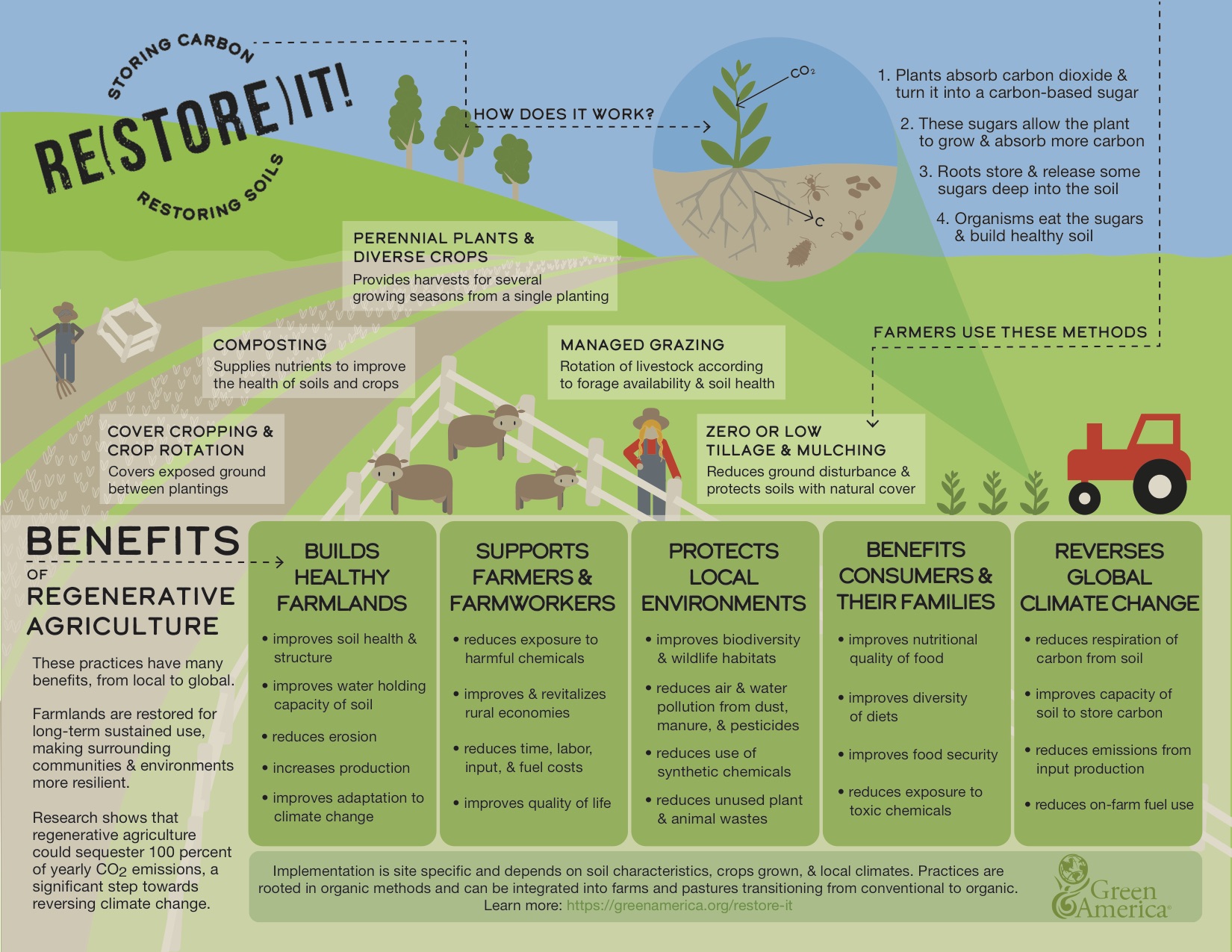
Agriculture and crop production rely on photosynthesis to combine sunlight, water, and carbon dioxide for plant growth. This carbon dioxide is pulled from the air—a process known as sequestration—and used to build plant matter, roots, and soil.
Regenerative agriculture* focuses on keeping this carbon out of the air, where it acts as a greenhouse-warming gas, and using it as a fertilizer in the soil. It also aims to keep carbon that originated from the soil in place. The practices that help keep carbon underground include: zero to low tillage, mulching, cover cropping, crop rotation, composting, planting perennials and diverse crops, and managed grazing.
These methods limit or reduce the disturbance of fields and pastures, so soil carbon isn’t exposed to the air and oxidized into carbon dioxide. The methods also focus on keeping the delicate soil communities healthy and protected by covering the soil, feeding it rich organic matter at many depths, and avoiding the use of harmful chemicals like pesticides and herbicides.

Download the PDF of the infographic here. Want more details? View the infographic sources here.
* This is an exciting time in the worlds of sustainable agriculture and climate change mitigation, when these two fields have the opportunity to collaborate and reinforce one another. This partnership is in its early stages, and terminology is constantly evolving.
Regenerative agriculture is a new term that is still being defined and debated. Green America is proud to be a part of this discussion and stands behind agriculture that builds healthy farmlands, supports farmers and farmworkers, protects local environments, benefits consumers, and contributes to the fight against climate change—regardless of the term used to describe it.
The organization recognizes that implementation of these agriculture methods will always be site specific and depend on soil characters, crops grown, and local climates. Green America's long-term goal is agriculture production that is regenerative and meets the USDA organic standard, the best way to achieve this is through the Regenerative Organic Certification.
Green America and our Soil Carbon Initiative supports farms capturing carbon in soils—helping the climate crisis—building biodiversity above and below ground, reducing the use of synthetic fertilizers, pesticides, and herbicides, and improving water retention in soils.






